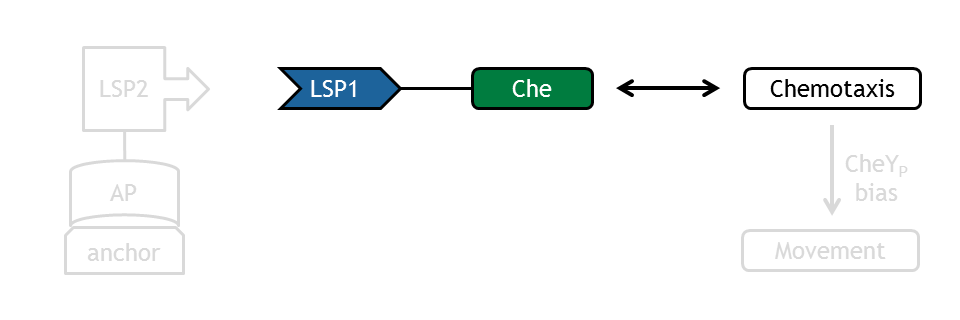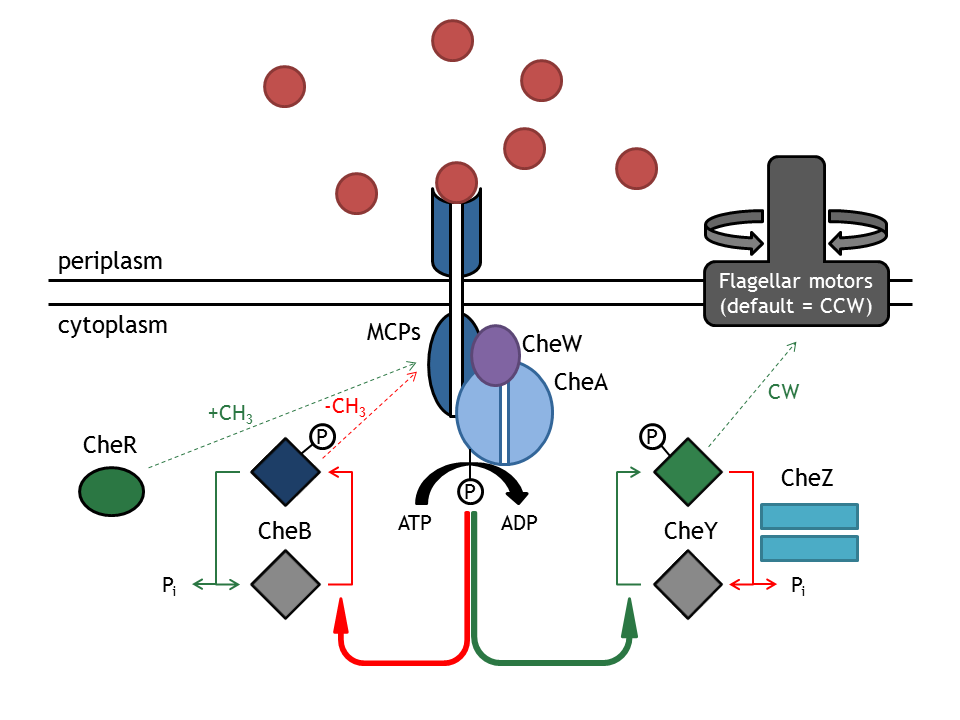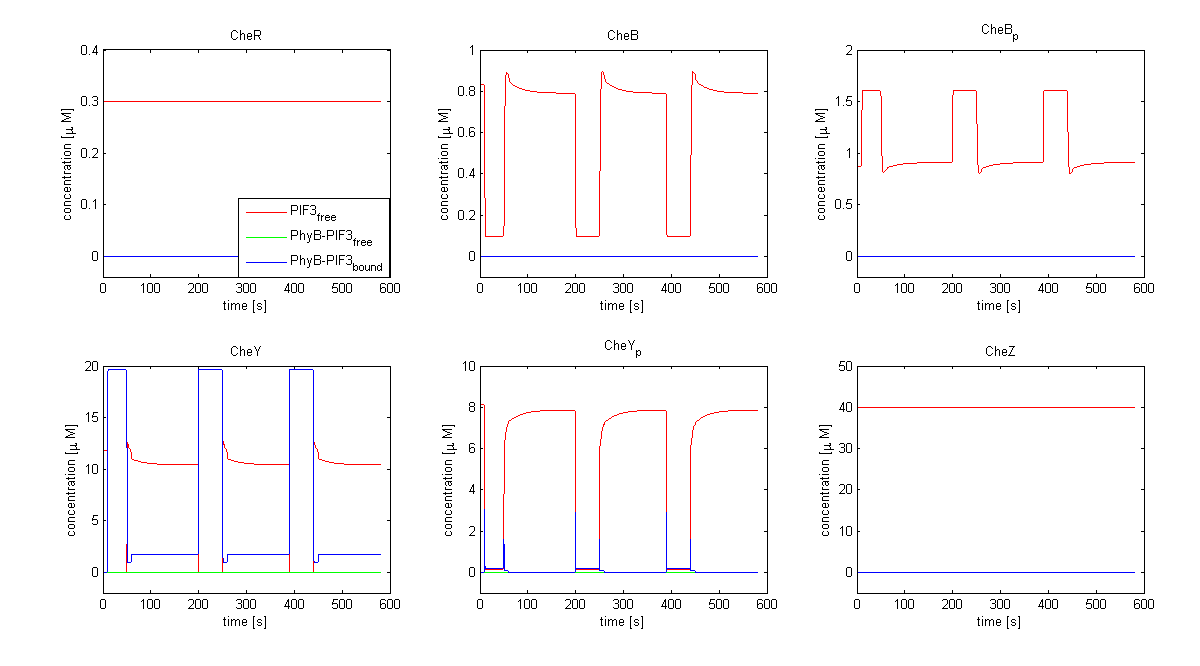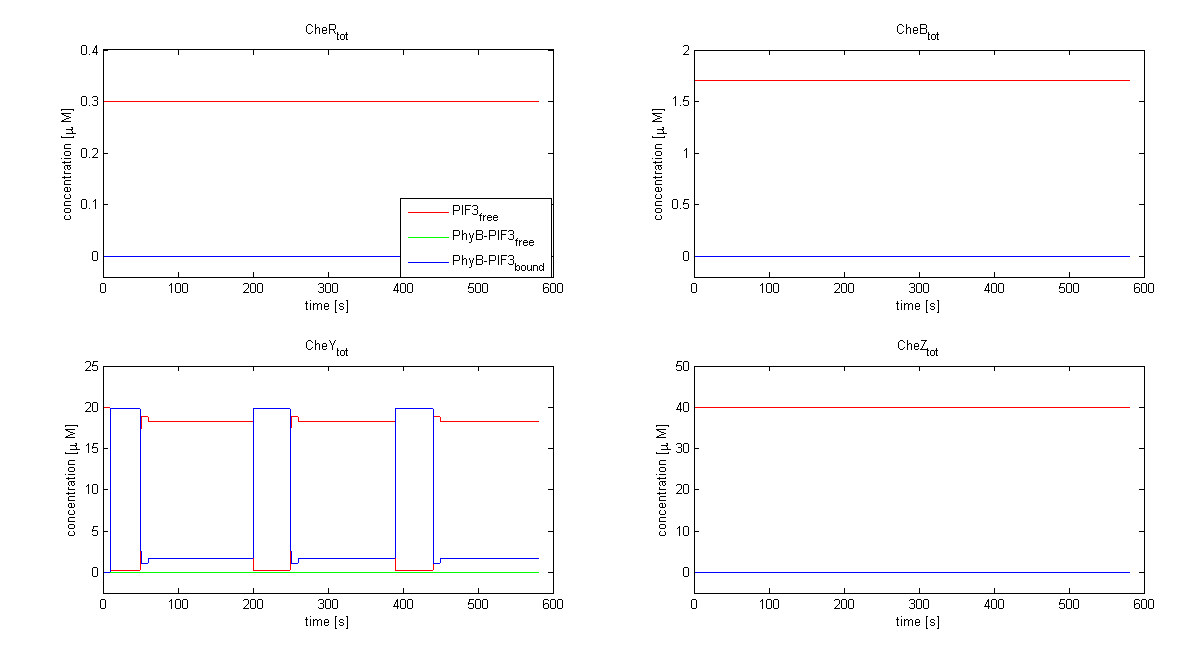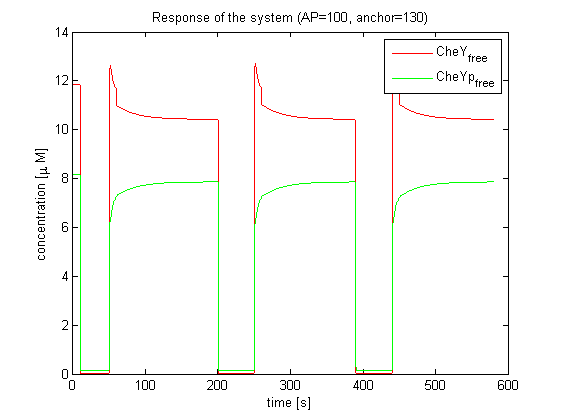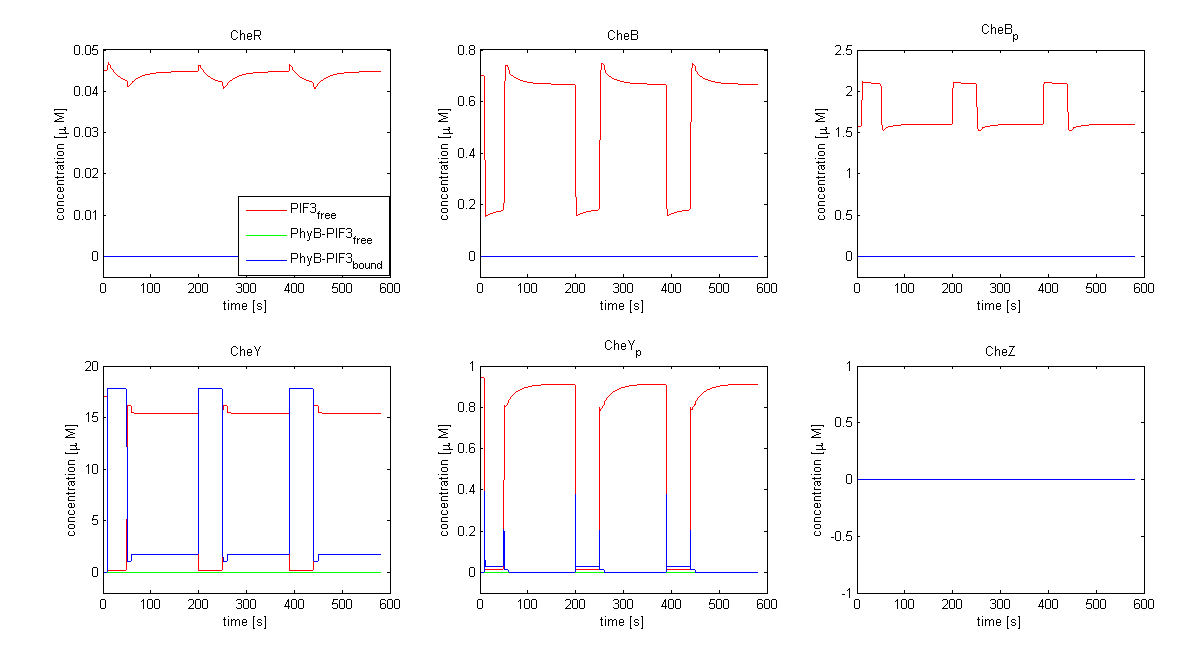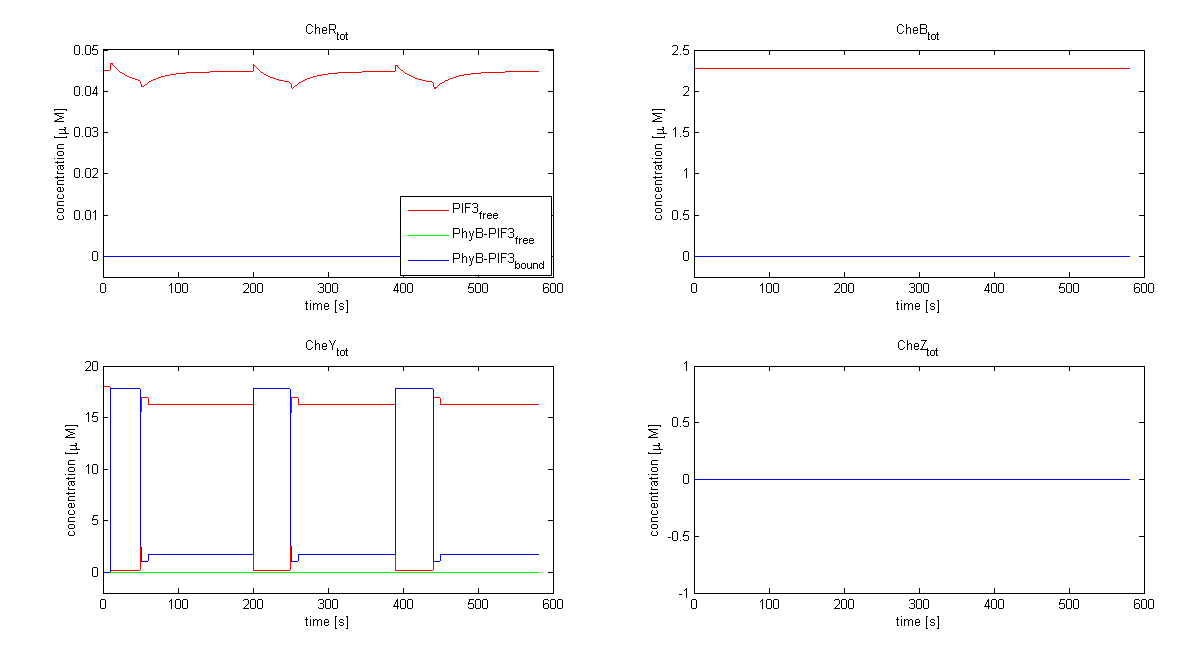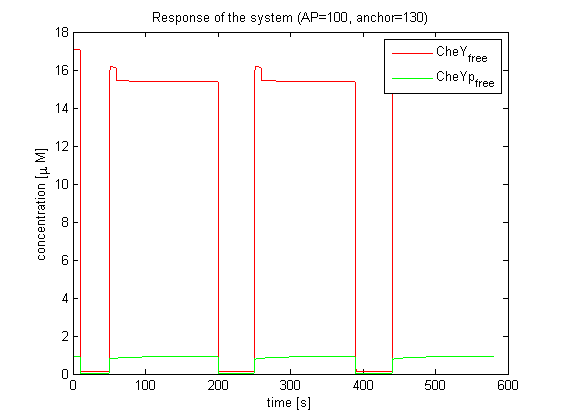Team:ETHZ Basel/Modeling/Chemotaxis
From 2010.igem.org
(→Modeling of the chemotaxis pathway) |
(→Background) |
||
| Line 20: | Line 20: | ||
Evaluation of the model based on this approach was conducted by changing concentration of selected Che species according to a series of time steps, reflecting light pulses. In addition to the selected Che species (CheR, B, Y, Z), possible phosphorylated subspecies were analyzed. | Evaluation of the model based on this approach was conducted by changing concentration of selected Che species according to a series of time steps, reflecting light pulses. In addition to the selected Che species (CheR, B, Y, Z), possible phosphorylated subspecies were analyzed. | ||
| - | Important for analysis of the chemotaxis network in | + | Important for analysis of the chemotaxis network in E. lemming is the concentration of the output species CheYp. Threshold of CheYp concentration is determined, according to predictions of the [[Team:ETHZ_Basel/Modeling/Movement|movement model]], regarding an optimization of corresponding tumbling / directed movement frequency. Response of the chemotaxis models was measured by taking the relative amplitude in CheYp concentration between two different light pulses. For CheR and Y, the difference in concentration of CheYp drops more than Delta (initial value - threshold), for CheB and Z it increases more than Delta. Manipulation of CheR and Y concentration therefore has an inverse effect on tumbling / directed movement ratio than CheB and Z. For all Che proteins, the concentrations stay below/above the threshold, until they are added again (LSPs are deactivated with far-red light and dimerization is reversed). |
| - | In terms of aspartate ligand | + | In terms of aspartate ligand concentration, the best results were obtained for assuming a high ligand concentration (saturation, the methylation level of the receptors is high). For CheY and Z, the reaction times were much faster than for CheB and CheR. |
For the combined model implementation, only two chemotaxis models have been further investigated to focus on implementation and extension of the original models: Spiro et al. (1997) and Mello & Tu (2003). | For the combined model implementation, only two chemotaxis models have been further investigated to focus on implementation and extension of the original models: Spiro et al. (1997) and Mello & Tu (2003). | ||
Revision as of 11:05, 26 October 2010
Modeling of the chemotaxis pathway
Background
The chemotaxis receptor pathway in E. coli is quite complex. Published models of chemotaxis [1], [2], [3], [4] thus have to use many assumptions in order to answer the investigated question:
- How does the output species (CheYp bias) react to perturbations of upstream species?
It was therefore decided to adapt and extend four different models based on published approaches [1], [2], [3], [4] to be able to achieve a more general consensus prediction of the chemotaxis behavior in E. lemming.
The chemotaxis network represents the main decision factor in bacterial movement and therefore, it received special attention for the experimental design:
The interface to the light switch model is the selected Che species, which is linked to one light-sensitive protein (LSP1). Concentration of this species (LSP1-Che) is determined by the light switch model.
Evaluation of the model based on this approach was conducted by changing concentration of selected Che species according to a series of time steps, reflecting light pulses. In addition to the selected Che species (CheR, B, Y, Z), possible phosphorylated subspecies were analyzed.
Important for analysis of the chemotaxis network in E. lemming is the concentration of the output species CheYp. Threshold of CheYp concentration is determined, according to predictions of the movement model, regarding an optimization of corresponding tumbling / directed movement frequency. Response of the chemotaxis models was measured by taking the relative amplitude in CheYp concentration between two different light pulses. For CheR and Y, the difference in concentration of CheYp drops more than Delta (initial value - threshold), for CheB and Z it increases more than Delta. Manipulation of CheR and Y concentration therefore has an inverse effect on tumbling / directed movement ratio than CheB and Z. For all Che proteins, the concentrations stay below/above the threshold, until they are added again (LSPs are deactivated with far-red light and dimerization is reversed).
In terms of aspartate ligand concentration, the best results were obtained for assuming a high ligand concentration (saturation, the methylation level of the receptors is high). For CheY and Z, the reaction times were much faster than for CheB and CheR.
For the combined model implementation, only two chemotaxis models have been further investigated to focus on implementation and extension of the original models: Spiro et al. (1997) and Mello & Tu (2003).
Spiro et al. (1997) [1]
The model of Spiro et al. (1997) [1] has been adapted to identify candidates of the chemotaxis receptor pathway by enabling removal or addition of a species upon light induction.
Mello & Tu (2003) [2]
The model of Mello & Tu (2003) differs from Spiro et al. (1997) in a way, that it is able to reach perfect and near-perfect adaptation. They investigated robustness of this system, which covers the effect of attractant binding through the phosphorylation of CheY. Governing ODEs are derived by applying the law of mass action to the known reactions. Five states of methylation and demethylation of the attractant-bound and free receptors are considered. The Mello & Tu (2003) model has been adapted to support our approach and shows similar behavior compared to the adapted Spiro et al. (1997) model.
References
[3] Rao et al: Design and Diversity in Bacterial Chemotaxis. PLoS Biol 2004;2;2;239-252.
[4] Barkai & Leibler: Robustness in simple biochemical networks. Nature 1997;387;913-917.
 "
"



